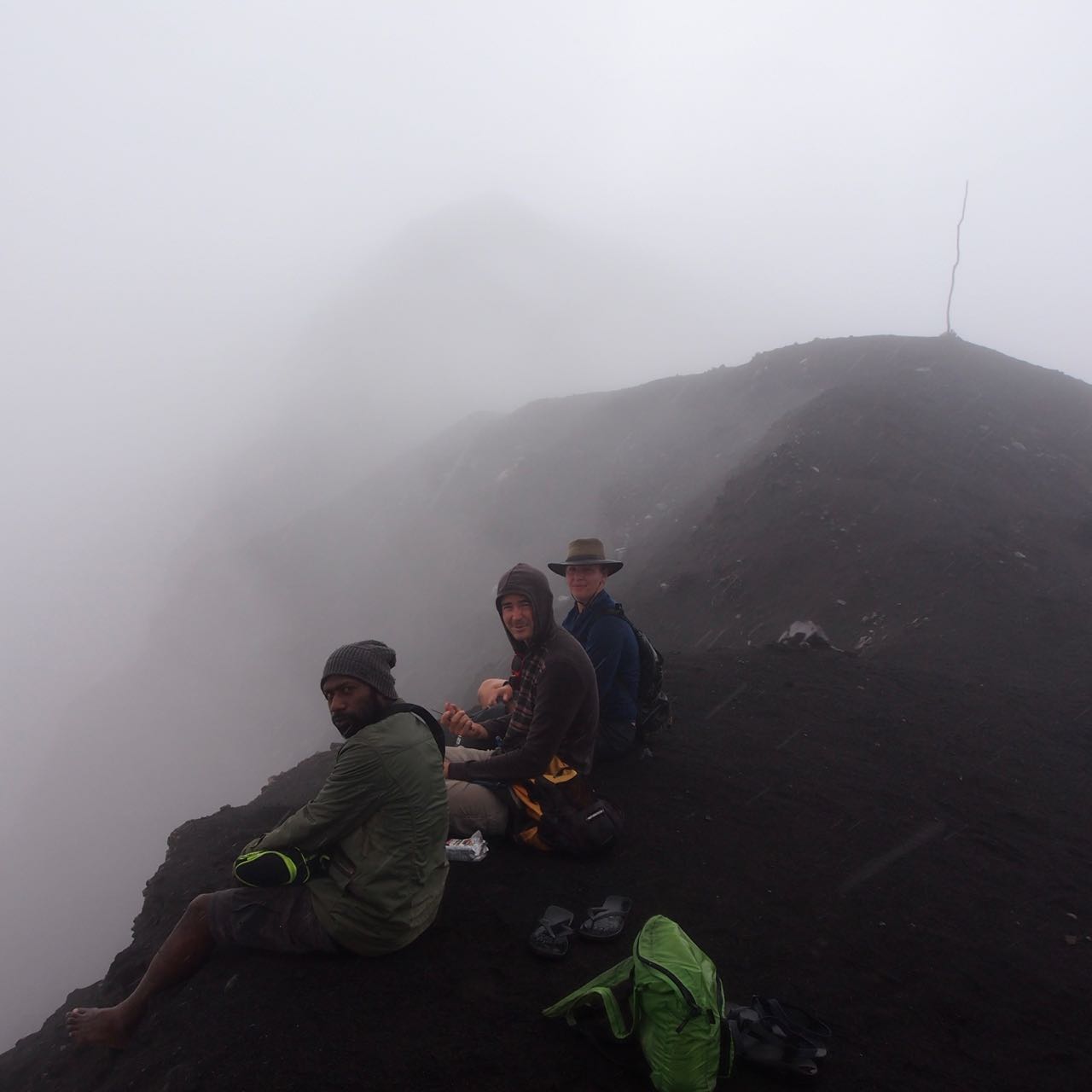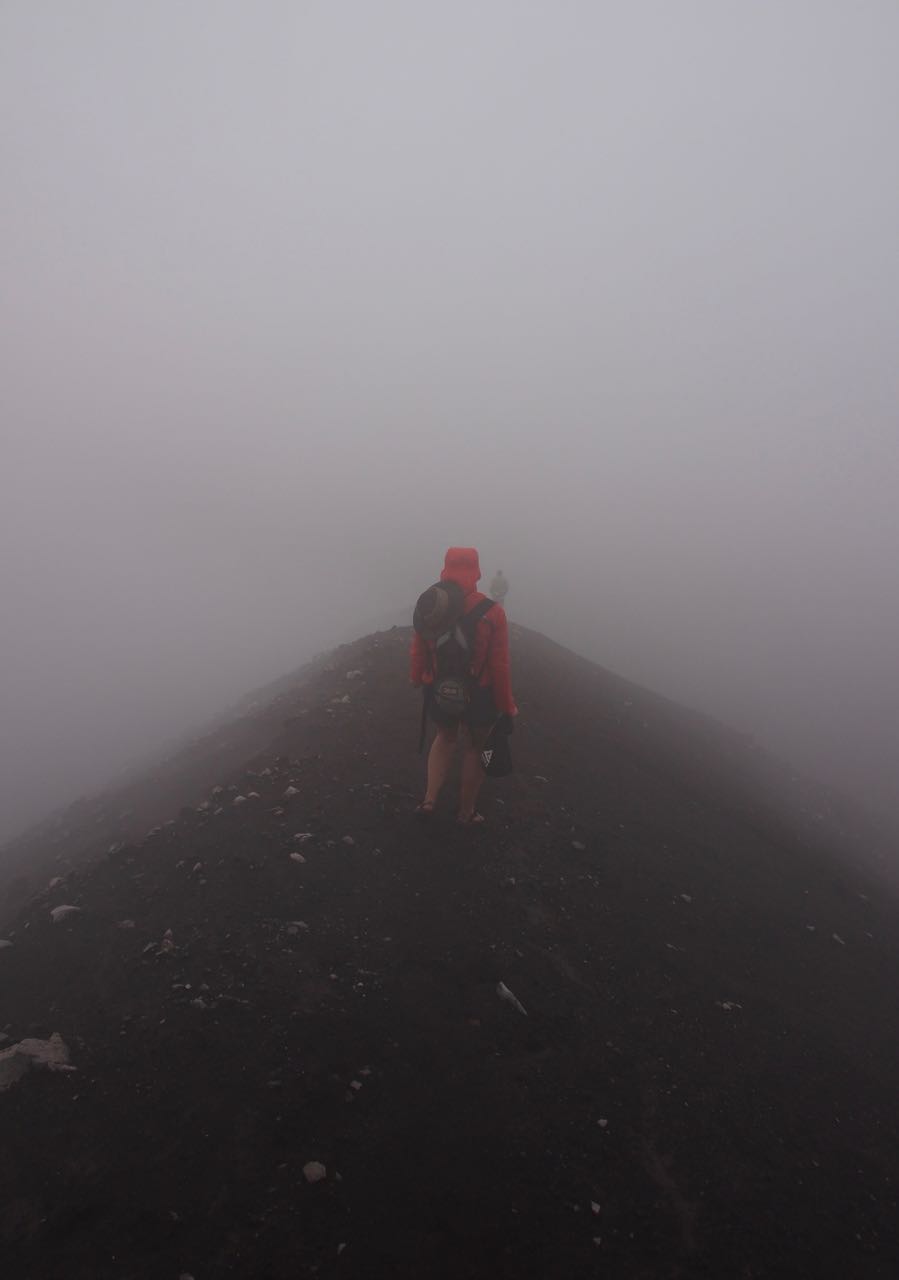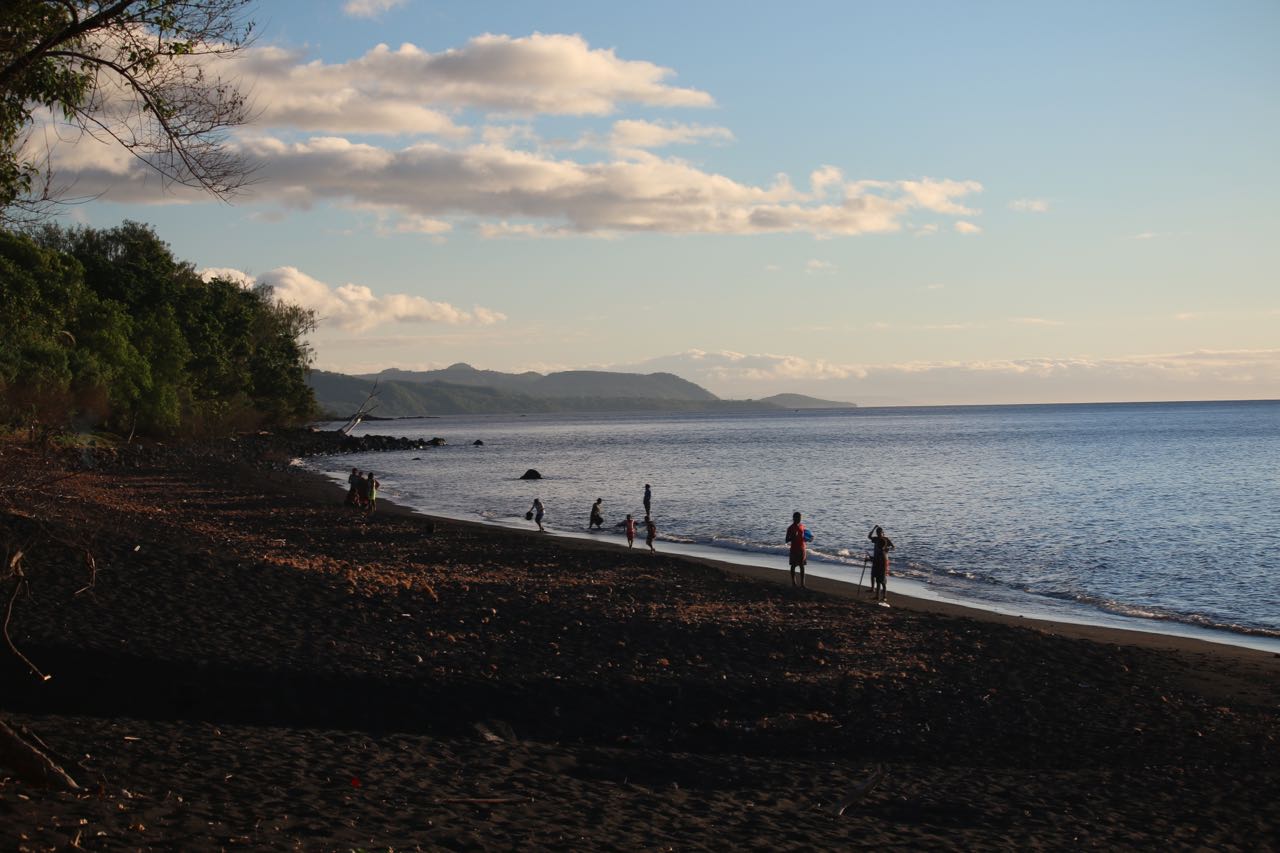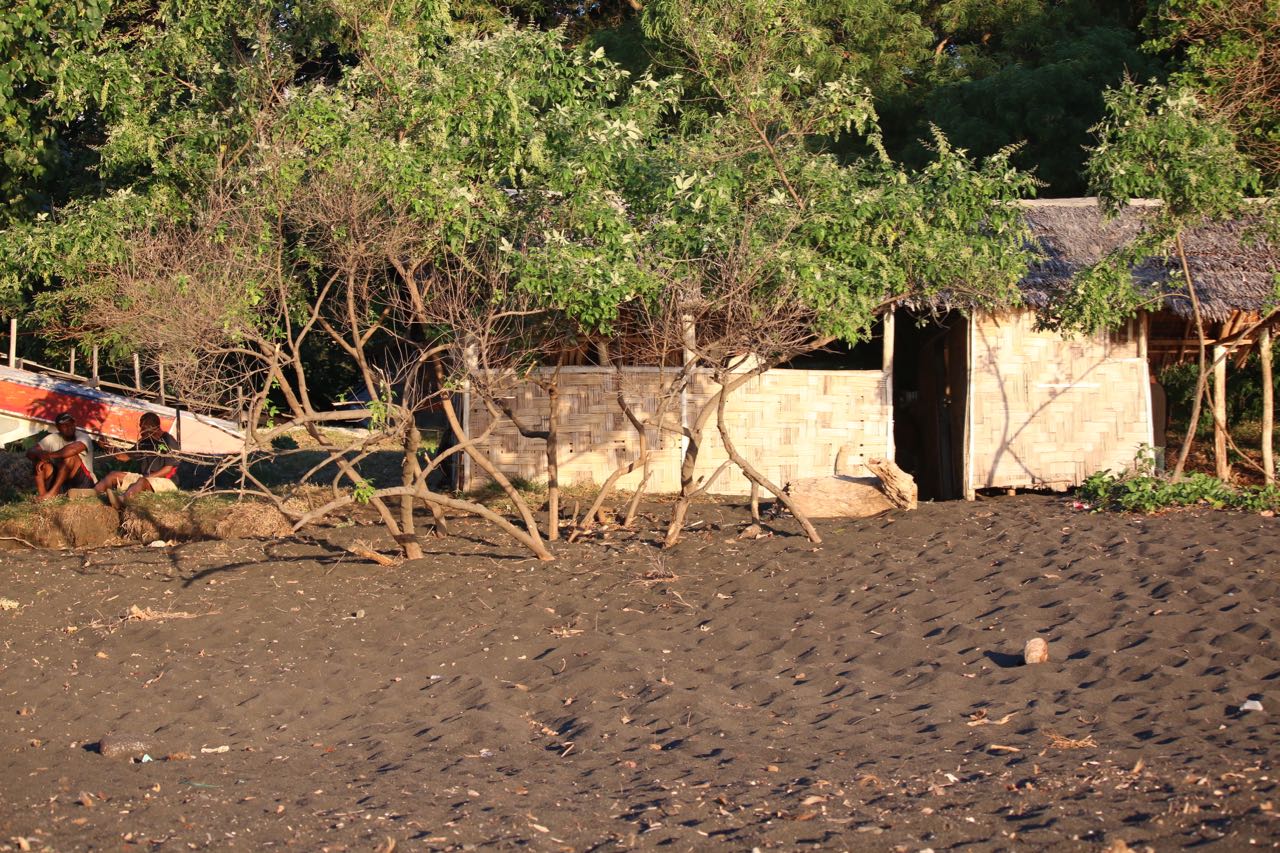Over the next few days, we recovered from our pig-trauma and Naganunan made himself at home. We had one more project to accomplish during our visit to Ambrym. The Volcano.
This volcano is a bit different than the one we visited in Tanna. It doesn’t erupt with explosions every five minutes, but instead, you can see the boiling lava pool. The trick to the volcano is to find just the right weather. Sunny, calm, very little wind, clear. Even if it is blue sky in the anchorage, it is very possible that clouds made from volcanic ash and smoke will gather around the peak. So, we wait and wait, until the last possible moment trying to get a good day. On our last day in Ambrym, we throw in the waiting towel and figure we will just have to give it a shot one way or the other.
We meet a new friend from Germany, and together the three of us arrange to have a local (Robert) guide us to the top.
The hike itself was not to be missed. We traipse through jungle:
Through a long lava field that was nothing but black ash just a short three years ago.
Next, we climbed up dried lava-falls.
Then arrived at stunning, rolling hills of wild cane.
As we walked, we chatted with Robert about all sorts of things: Ni Vanuatu magic, magic volcano rocks, village life, his kids, and pigs. Robert explained a bit more about the pigs.
In the way we build our careers, climb the corporate ladder, amass dollars and cents if we can, the Ni Vanuatu grow pigs. Young boys kill their first pig as early as possible. Once a young boy kills a pig, his mother can no longer punish him; he moves out of the hut with the women and children, and moves into the huts with the men.
In order to marry, a man must kill a pig and give it to each of his mother’s brothers. His ability to raise pigs, kill them and then give them away proves his worth as a man, shows his ability to care for his family, and builds his participation in the village.
Among other rites of passage, a man can achieve greater status in the village if he can raise a pig with tusks. Keeping a pig alive long enough to grow fat is one thing; keeping him alive long enough to grow tusks is another. Pigs usually do not start growing tusks until they are 18 months. Then, in order to allow the tusks enough space to grow and curl, the man must wrestle the pig into his “hogtie” and knock out a few other teeth that get in the way. Tusks grow as a result of testosterone: can you imagine wrestling, hogtying and then knocking out the teeth of an adolescent wild boar? I’m pretty sure the boar has gotten the best of more than a few Ni Vanuatu.
If you survive the adventure of teeth removal, the man must then care for and keep the pig healthy for years. Curly tusks can take 3-8 years to develop! The more circular you can grow your pig’s tusks, the more respect you can garner in the village.
The Chief of the Fanla village wore not only two parallel tusks rolled into a full circle, but a bracelet on his wrist. A full circle tusk can take eighteen years to develop.
Pretty soon, our trail loses all its foliage and we are left hiking up the barren ridge of ash. A mist of acid, smoke, and humidity smothers the trail. The conditions are not looking good for cauldron viewing.
Once we reach our destination, we sit on the sharp edge of the cauldron. Finest hairs of glass worm their way beneath the ridges of our finger and toe prints. In Hawaii, the islanders believe it is the hair of the Volcano Goddess, Pele. We ask Robert if the Ni Vanuatu believe in a Volcano Goddess.
“No, they just ruin our crops. They get caught on the wind, land in our gardens and ruin our plants.”
Well, that is less romantic.
A billowing cloud of hydrochloric acid catches our throats, making breathing difficult and uncomfortable until it passes. The wind is blowing at the peak, blanketing us in smoke from the second volcano just Southeast. In our blindness, our audio sense is more sensitive, we hear the volcano’s thick gurgling below us.
We wait and hope. “Just clear for a moment!” Andrew begs. For one moment, the clouds thinned enough to see a slight red glow below us. “Look! There! LOOK!” Then a gust of wind brings more cloud to settle in place. Our volcano luck isn’t the best. An hour and a half later, we are cold and wet from the dusting of mist that beads up in our hair and on our clothes. Robert is turning into a Popsicle. We decide to turn back.
The scenery is no less stunning on our hike down. As we drop out of the clouds, grassy hills roll out to the sea. Soon, the sun is out and we are removing wool layers. It’s a beautiful day.
We cap off our Ambrym trip drinking kava at a beachside kava bar and watching sunset. The volcano glows red as we head off to bed. Our time in Ambrym is closing, and our time in Vanuatu is not far behind. This is going to be a hard place to leave.



































